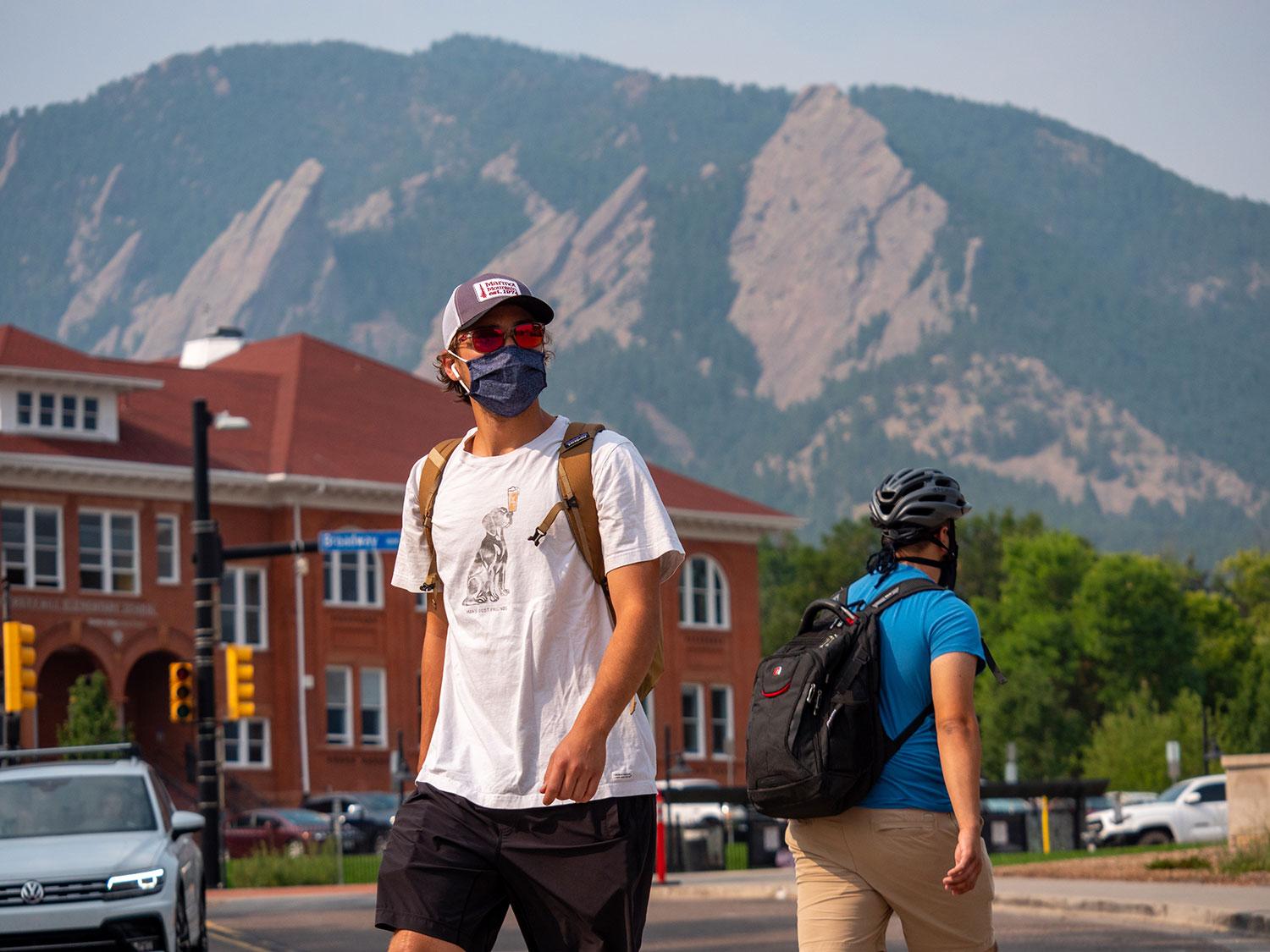
CU Boulder Changed

During the initial days of school this August, Julia Beattie (MechEngr’22) of Centennial, Colorado, briefly visited campus. It was peaceful, but the usual back-to-school commotion and energy was drastically muted.
“I'm excited for it to someday get back to the bustling campus it normally is," said Beattie, a junior.
For now, a physically distanced CU Boulder is the norm.
Over the summer, facilities staff met daily to hash out how to maintain the space, sanitation and ventilation needed to reduce the risk of COVID-19 transmission to students, faculty and staff.
“How do we make sure we provide a meaningful experience, and how do we do that safely?” said David Kang, CU’s vice chancellor for infrastructure and sustainability.
In CU’s hybrid model of study, students mauy take both remote and in-person classes. They wear masks on campus. Upon entering a classroom, students are greeted with a sanitizing wipe station to sterilize their hands, personal items and seat. Inside lecture halls, most chairs remain empty.
Capacities across campus are down by 70 percent or more, said Kang. The CHEM 140 lecture hall, for instance, normally fits 500 — now, only 50 students at a time are allowed for instruction. For some classes, a portion of enrolled students attend the lecture in person on a given day, while the rest tune in for a live stream. Some classes are fully remote.
Returning students and faculty members have been adapting since March, while new students are learning the ropes.
“Done with [the] first Zoom class of the semester,” tweeted CMCI assistant professor Jed Brubaker the second day of class. “Students were so nice! They were engaged, interested and ready to learn. In 75 [minutes] I’ve shifted from terrified to ecstatic!”
The whirring HVAC systems are working overtime. Over the summer, facilities staff upgraded the ventilation systems so that two to four fresh air replacements occur every hour. In older buildings, stand-alone units circulate air through filters fine enough to capture virus-laced respiratory droplets.
After a morning classroom lecture, a student might head to one of the many open-air tents that have sprouted up across the campus and log in to their next class — an online course. On their way, they don’t shoulder through the usual crowds. Passing periods are now longer. The day is also longer — classes are held from 8 a.m. to 10 p.m.
“I think it’s important that we all practice safe social distancing, especially at a college of this size.”
Some lectures take place outside traditional classrooms. Spaces now reserved for teaching include the Glenn Miller Ballroom, conference rooms and hotel meeting spaces near campus.
At mealtimes, students order their dining-hall food ahead of time through an app or stop by to pick up ready-made meals, and eat outside. Throughout campus, signs remind students to “Protect Our Herd,” including by standing one buffalo-distance apart.
“It’s building culture,” said JT Allen, director of facilities for housing and dining services. “It’s this ongoing discussion of taking personal responsibility and responsibility for your fellow Buffs.”
In lieu of holding office hours in their offices, professors can opt to meet students under the tents or in larger indoor spaces. Many university staff in customer-facing roles work behind plexiglass, and many more work from their homes.
Before moving into the residence halls this August, every student living on campus was tested for COVID-19, either within five days prior to arrival or upon arrival using CU-provided options. Students are also cohorted based on their academic college; they take classes and live alongside the same individuals in the residence halls, which include isolation rooms to separate anyone who contracts the virus. They are screened weekly for the virus using a saliva test developed by CU researchers.
“We are laser-focused on making sure that the fall hybrid model is safe,” said Kang.
The science and severity of the pandemic is constantly shifting, and Kang acknowledges the need to be flexible. Facilities staff meet daily to discuss updates to COVID-ready procedures as guidance, science and policy related to the virus evolve.
From Aug. 24 to Oct. 7, the university reported 1,097 positive results for COVID-19 from diagnostic testing through CU Boulder Medical Services. Following a period of remote-only instruction that slowed the spread of the virus, the campus resumed in-person and hybrid teaching Oct. 14.
In August, Beatriz Sanchez (A&S’24), an incoming freshman from Boulder living in Stearns West residence hall, expressed both excitement and nervousness about the semester.
“I think it’s important that we all practice safe social distancing, especially at a college of this size,” she said. “We are already sad about our [high school] senior year, and we are doing all that we can to preserve the little milestones that we have in life.”
Photos by Glenn Asakawa

